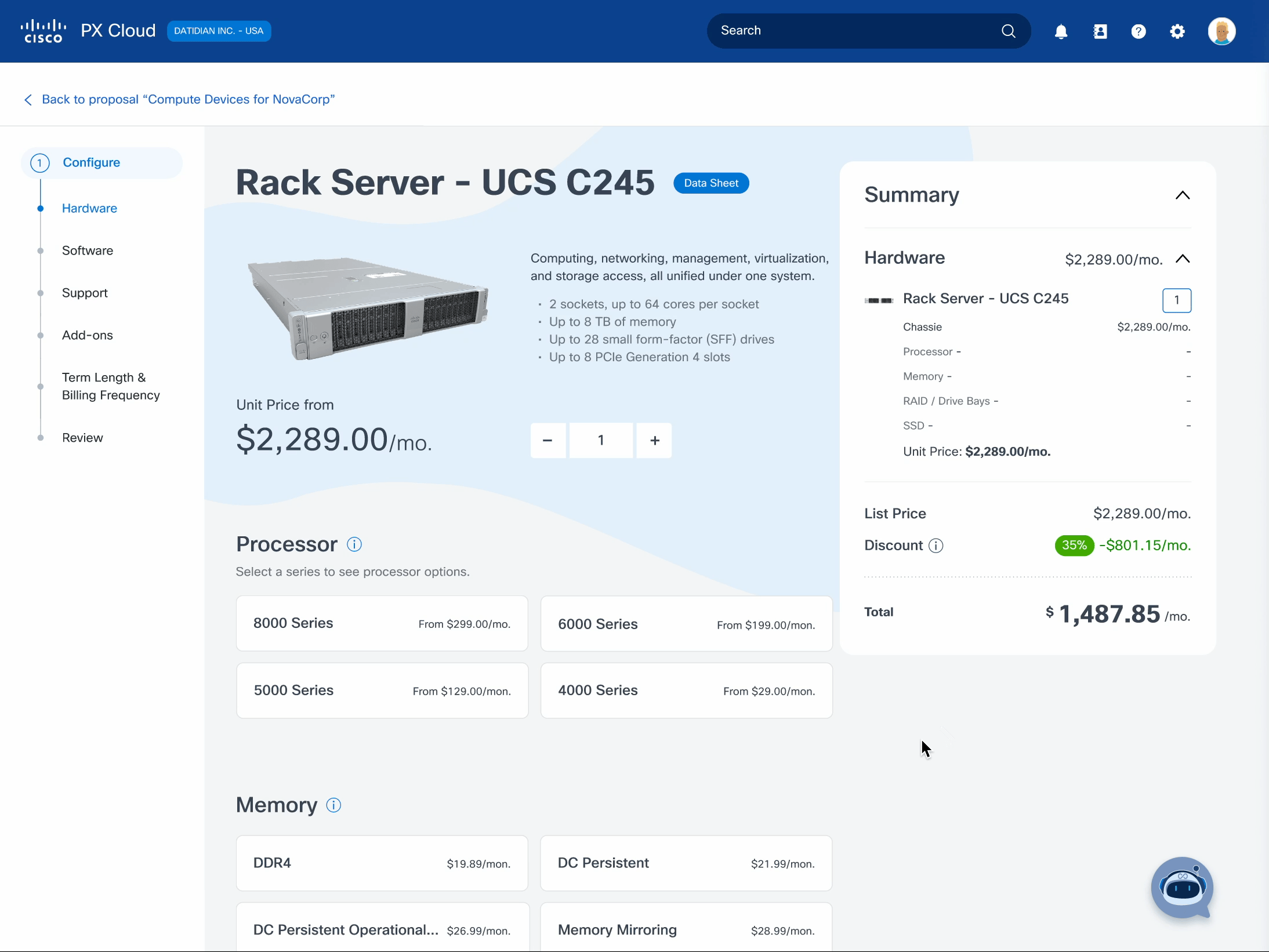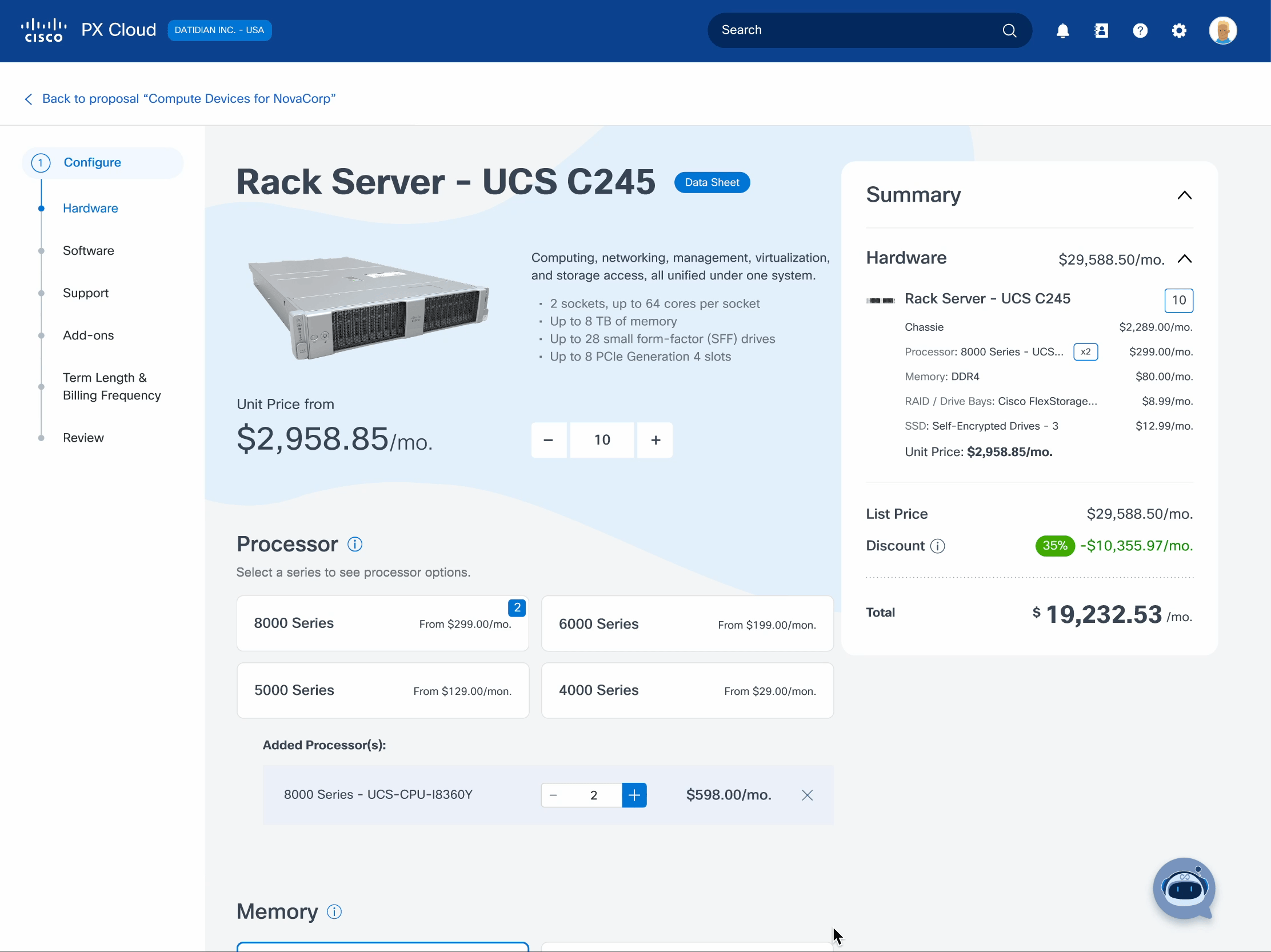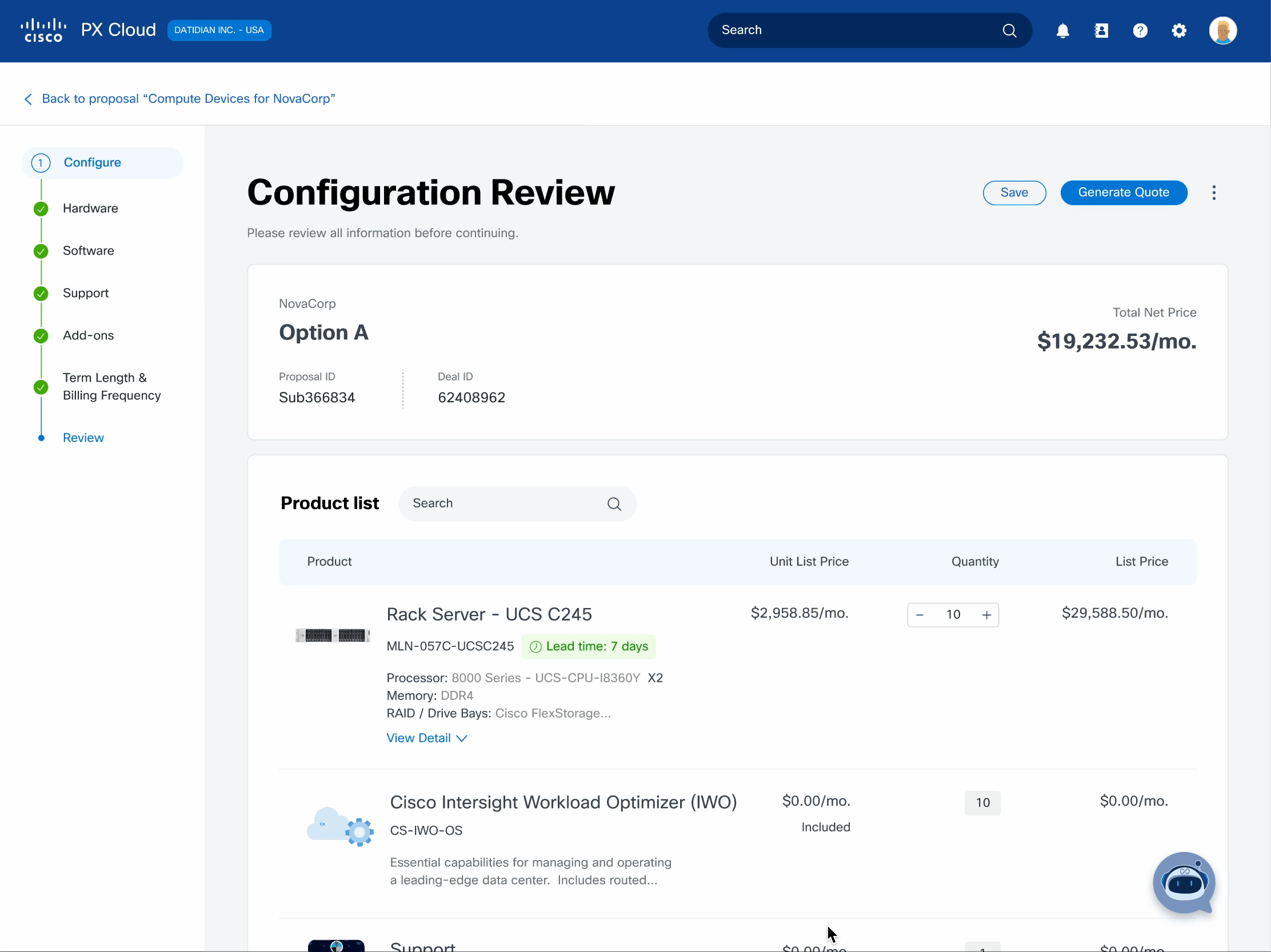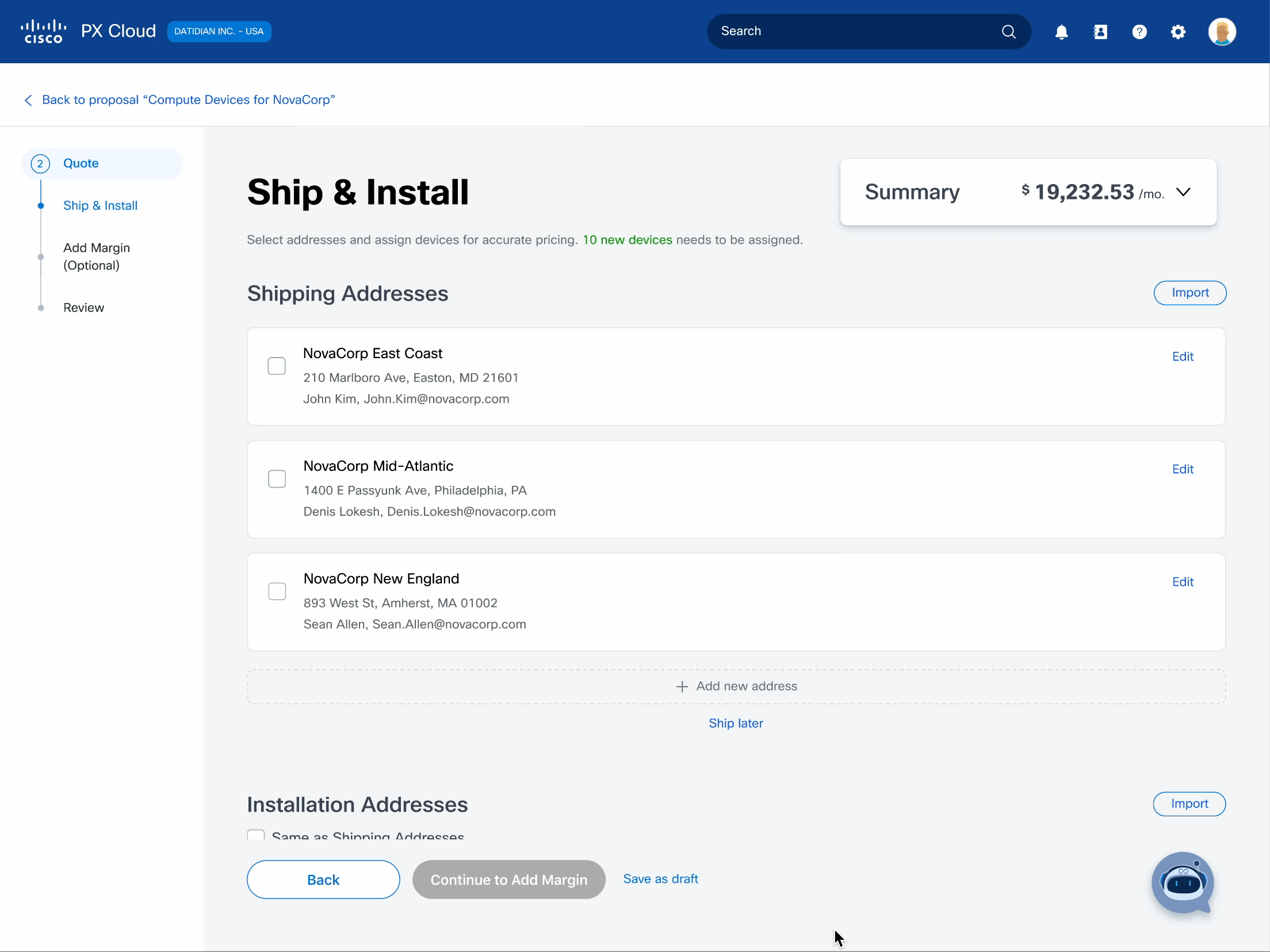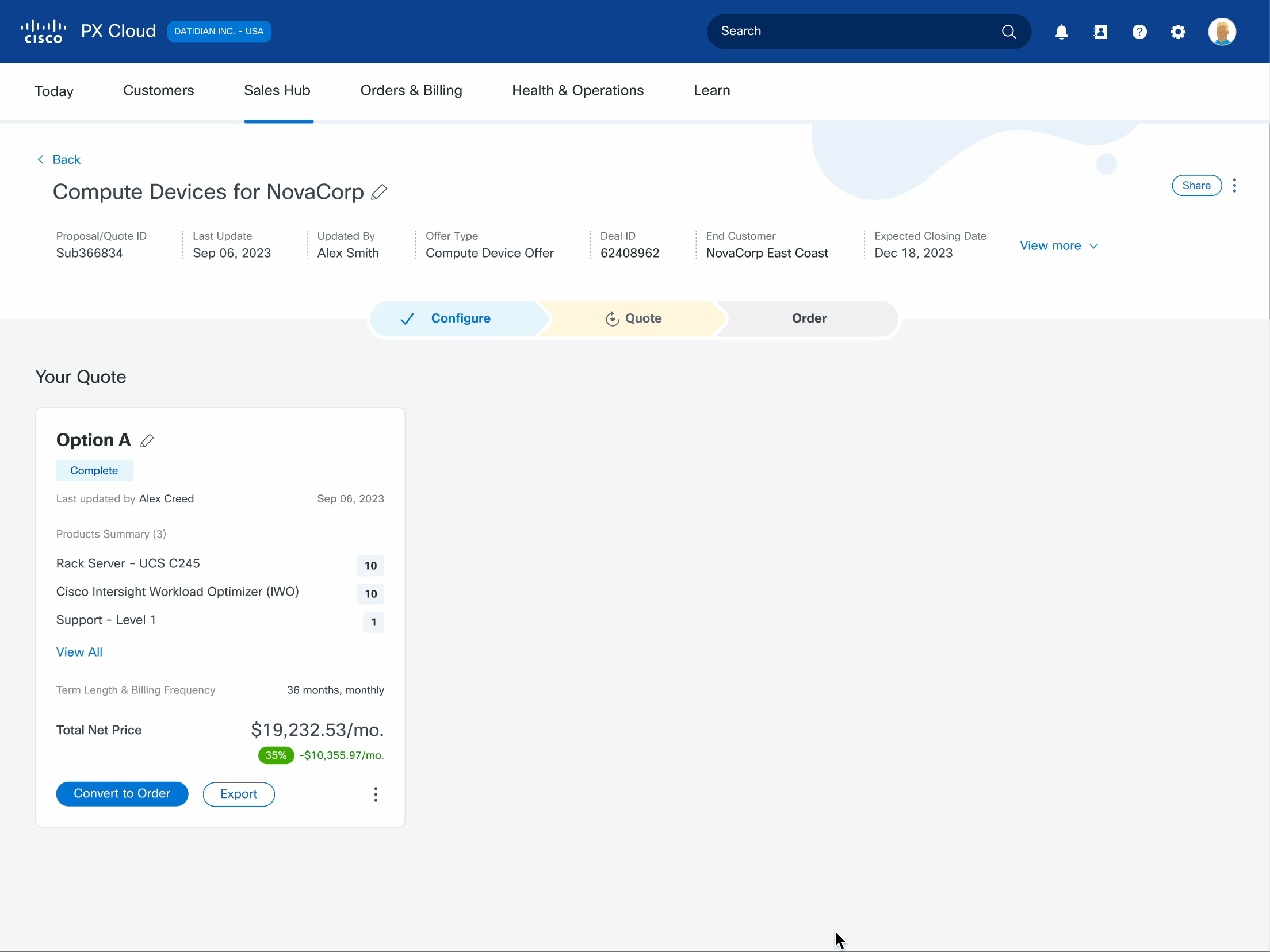Cisco Partner Experience (PX) Cloud
Platform Design | E-commerce | Enterprise Collaboration
Overview
Cisco's technology powers over 1 billion devices worldwide, generating more than $50 billion in annual revenue through its commerce platform.
Cisco Commerce (CCW), a 15-year-old platform, is used for purchasing hardware, software subscriptions, and service renewals. However, in the 2023 Cisco Partner’s Voice Survey, 42% of distributors thought CCW difficult to use.
Impact & Highlights
Problem
01 Challenge
As mentioned, 42% of distributors find CCW difficult to use. The main challenge is ambiguity—who struggles with CCW? Which features are problematic? What issues do they face? Identifying these pain points is crucial to enhancing the user experience.
02 Methods
To find answers, I collaborated with a UX researcher to conduct user research. We interviewed 15 distributors in 75–90-minute sessions. Participants had experience in sales, quoting, and ordering and represented diverse roles, company sizes, and locations.
Then I conducted a deep analysis of the current platform and compiled a comprehensive problem list to guide our redesign.
03 Define
Based on our research findings, we worked closely with product managers to summarize four key pain points in the purchase experience.
Opportunity
We held a workshop for in-depth discussions and alignment on the future-state experience, prioritizing tasks for the MVP phase.
Reimagine the CCW experience to deliver:
Design process
Ideation
Leveraging insights from user research and the workshop, I created the first version of the Partner Sales Cycle, adding assumptions on steps for potential improvements.
Given the project's massive scope, our next step was to refine our focus. We worked closely with product and technology teams to align on priorities, streamline the scope, and define key features.
My role specifically centered on designing the Initial Purchase and Modify Subscription flows for the Partner E-commerce platform.



Information Architecture
The team went through multiple iterations of card sorting and organization to inform the Information Architecture.
As the Commerce experience is net-new, it was critical to build it to scale up and be modular in the future. The new framework can scale up/down based on different cases.
This experience provides a streamlined flow, helping users with a guided experience that reduces cognitive load while enhancing collaboration and efficiency.
Testing and Iteration (Design Version 1.0)
I developed 6 user flows for different cases, produced 200+ wireframes, and created prototypes to explore solutions.
Key design artifacts included:
Wireframes for guided workflows tailored to both simple and complex configurations.
Serviceable summary views provide transparency across all selected items.
A step-by-step navigation framework to clarify user progress and reduce confusion.
Through 4 usability testing rounds with 50+ participants, we iterated our design based on the user feedback.
For example, when we displayed products, there were two different views:
In this testing, we originally set the Product View as the default. However, after testing, 90% of participants preferred the List View, finding it more efficient for selecting and configuring products. That’s why we made the List View the default in our final design.
Design Solution
The final solution introduced a guided 3-step process - Configuration, Quote, Order, which addressed partner needs while maintaining Cisco’s business goals.
Prototype (Design Version 2.0)
User-configurable product detail page AI assistant - helps users compare and select products
Complete product configuration Convert one selected configuration to quote
Add shipping & installation addresses -> Add margin -> Review Upload customer approval -> Review -> Submit Order
Strategic Recognition
🏆 The design improvements significantly enhanced usability and efficiency, elevating the project to priority status within Cisco’s CX organization. The proof of concept was highlighted by the SVP as a standout example of design-driven innovation, validating its readiness for production.





















